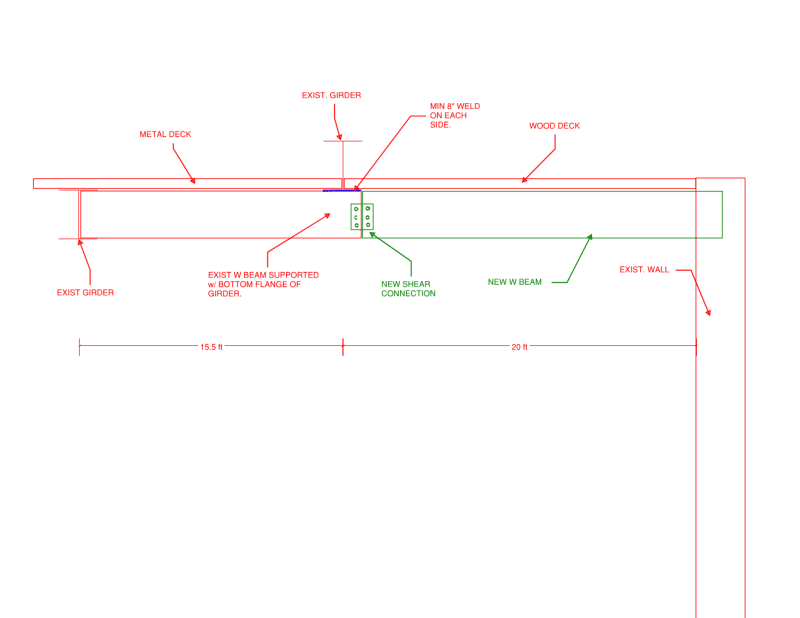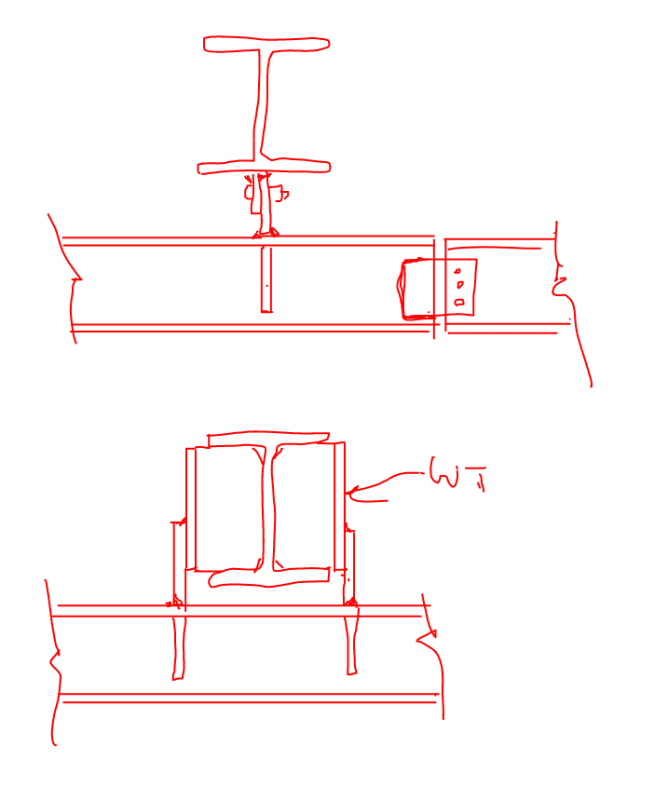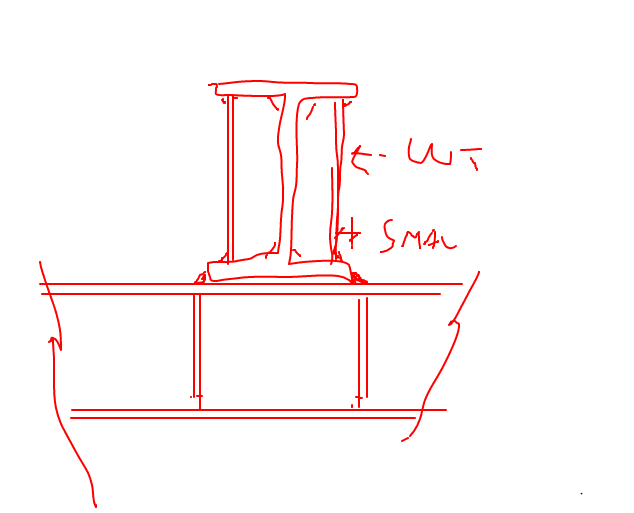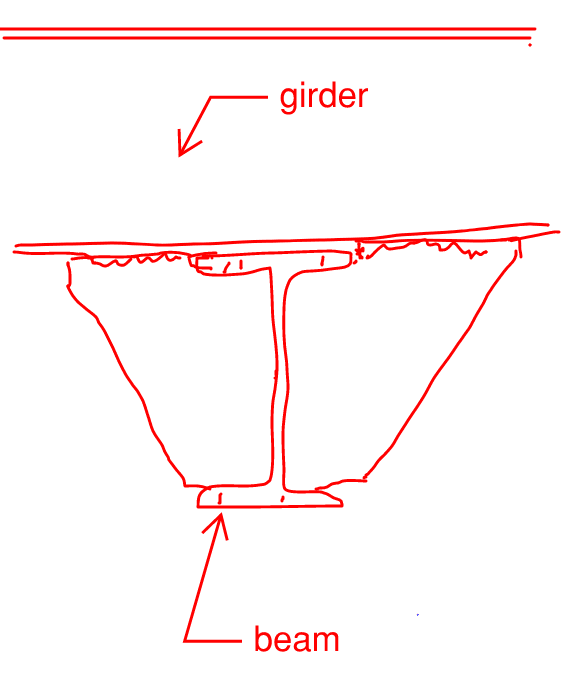I have come across an existing detail where the floor is supported on a beam that is welded to a girder bottom flange at one end. Note that the girder beam sticks above the floor to form a "curb." To the right of the existing floor beam, the client is changing the use of the floor and I have two intermediate members aligned with the "dropped" beam. I am thinking of connecting the new beam with the existing one via a shear connection and just confirm the capacity of the existing welded connection without making a lot of changes to the existing system.
Do you see any concerns with the welded connection between the top flange of the floor beam and the bottom flange of the girder? Based on the capacity of the weld (force will be perpendicular to weld), my d/c is well below 50%. I want to confirm if there is anything else I should be considering for this detail.

Do you see any concerns with the welded connection between the top flange of the floor beam and the bottom flange of the girder? Based on the capacity of the weld (force will be perpendicular to weld), my d/c is well below 50%. I want to confirm if there is anything else I should be considering for this detail.




